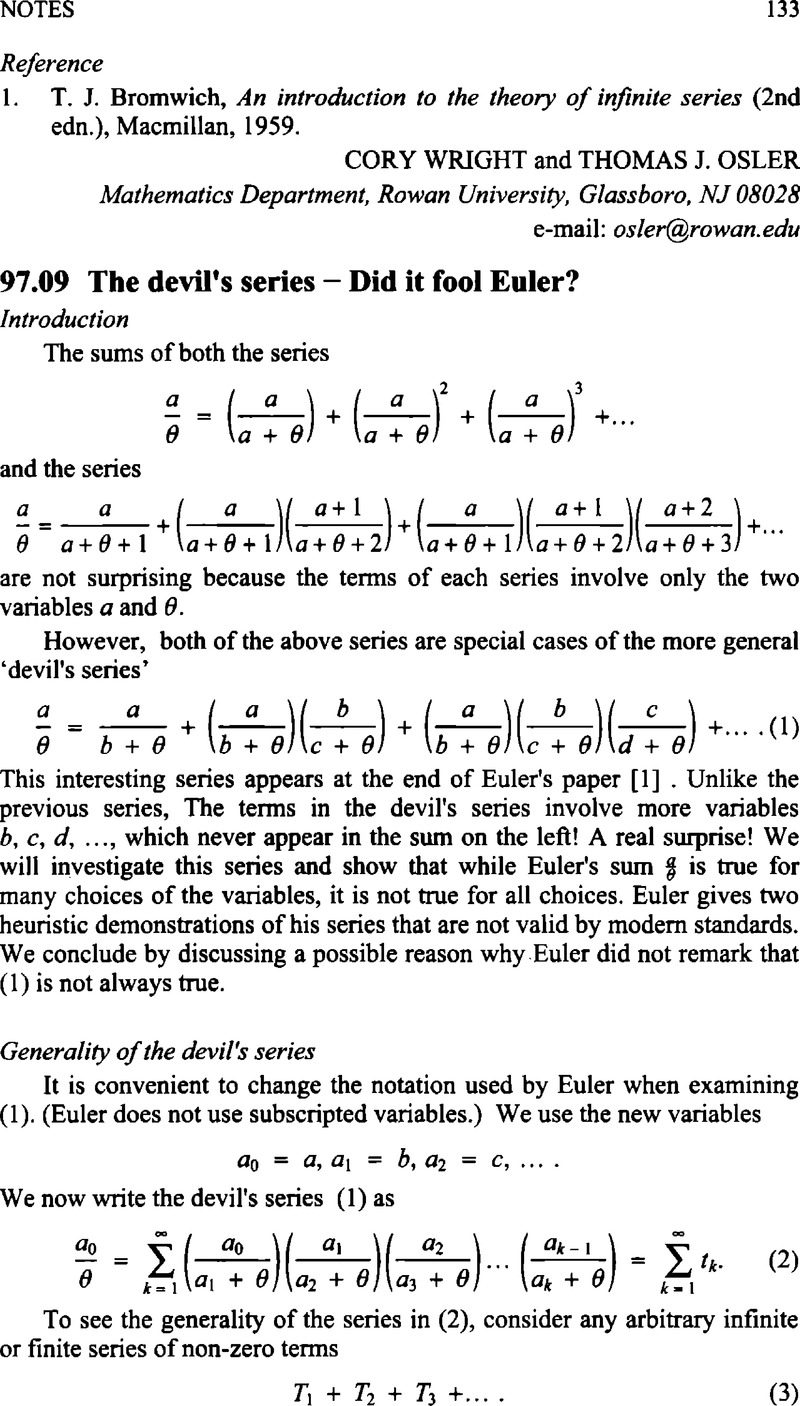No CrossRef data available.
Article contents
97.09 The devil's series – Did it fool Euler?
Published online by Cambridge University Press: 23 January 2015
Abstract
An abstract is not available for this content so a preview has been provided. Please use the Get access link above for information on how to access this content.

Information
- Type
- Notes 97.01 to 97.16
- Information
- Copyright
- Copyright © The Mathematical Association 2013
References
1.
Euler, L., Exercitatio analytica, ubi imprimis seriei maxime generalis summatio traditur. (An analytic exercise, for which a most general summation of series is given.), E 685. Originally published in Nova Acta Academiae Scientarum Imperialis Petropolitinae
9, 1795, pp. 41–53. Opera Omnia: Series I, Volume 16, pp. 266-281. On the web at http://eulerarchive.maa.org/
Google Scholar
2.
Abramowitz, M. and Stegun, I., Handbook of mathematical functions: with formulas, graphs, and mathematical tables, Dover Publications, 1964.Google Scholar
3.
Osler, T. J., Euler and the functional equation for the zeta function. The Mathematical Scientist. 34 (2009), pp. 62–73.Google Scholar

